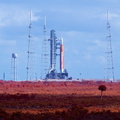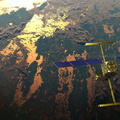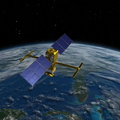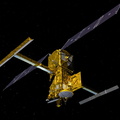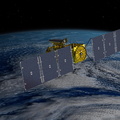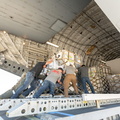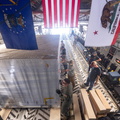
WIKIARCHIVES.SPACE
The Human Spaceflight Archive

Information
- Taken in
- Kennedy Space Center
- Údar
- NASA/Isaac Watson
- Description
- Exploration Ground Systems Manager Mike Bolger (left) and Artemis I Launch Director Charlie Blackwell-Thompson (right) raise the Artemis flag near the countdown clock at NASA’s Kennedy Space Center in Florida on Nov. 14, 2022. NASA’s Space Launch System (SLS) rocket and Orion spacecraft can be seen in the background at Kennedy’s Launch Pad 39B. The uncrewed Artemis I flight will be the first integrated test of the agency’s SLS rocket and Orion spacecraft and is scheduled to launch Wednesday, Nov. 16. The primary goal of Artemis I is to thoroughly test the integrated systems before crewed missions by launching Orion atop the SLS rocket, operating the spacecraft in a deep space environment, testing Orion’s heat shield, and recovering the crew module after reentry, descent, and splashdown. During the flight, Orion will launch atop the world’s most powerful rocket and fly farther than any human-rated spacecraft has ever flown, paving the way for human deep space exploration and demonstrating our commitment and capability to extend human presence to the Moon and beyond
- Created on
- Dé Luan 14 Samhain 2022
- Albums
- US SPACE PROGRAM / ARTEMIS (WIP) / ARTEMIS 1 / Training and Pre-Flight
- Source link
- https://www.flickr.com/photos/nasakennedy/albums/72157664052441771
- Visits
- 43
- Rating score
- no rate
- Rate this photo
- License
- Public Domain
- Modified by WikiArchives
- No (original)
- Downloads
- 1
EXIF Metadata
Canon Canon EOS 5D Mark IV
- Make
- Canon
- Model
- Canon EOS 5D Mark IV
- DateTimeOriginal
- 2022:11:14 14:19:04
- ApertureFNumber
- f/8.0
Powered by Piwigo




